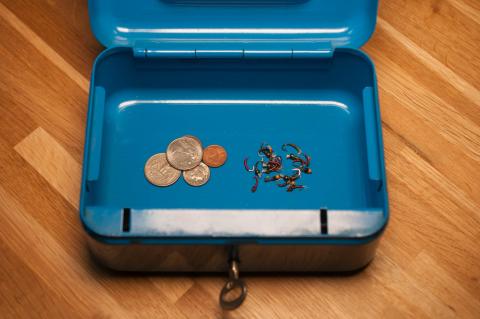Recent comments
I have just bought my first house in the UK, and getting ready to move.
Now that I have a workshop, this is the first task.
THANK YOU!
I will let you know how it comes out.
Tim
- Log in to post comments
Martin, what a wonderful fly. I tied a couple this evening and went to the lake to try them, took one 2 kg pike and missed another who chewed the fly to thin strips.
Soren
- Log in to post comments
Hello Ripley,maybe you already tested this fly in Lithuania? :)
Regards,Sarunas_St
- Log in to post comments
Paul, I am grasping at straws! I found a fantastic guy who ties superb salmon flys for sale on the web-- somewhere in the UK and have lost and cannot find again.This is how I came across you! Any idea at all who the fellow is ? noel j ross @ yahoo.com, {dublin ireland} sorry for the bother!!!!!
- Log in to post comments
Frome: E. Straitiff -straitiffedward@yahoo.com
I live on the White River and Norfolk river here in arkansas. The only thing I fish is the wooly bugger in small sizes on a 4 wt 8.5 rod Thay never let me down.
- Log in to post comments
Once again, a great article on photography !
I think that with a little experimenting on where to point a camera to determine the exposure a better picture can be made in certain situations.
As we know most digital slr's have the choice on how the exposure is measured, spot, partial or matrix, most compacts do not have this choice, although the average fisherman will carry a compact..
When taking landscape or even portrait pictures under difficult light situations it might be helpfull to point the camera on the darker or lighter area, keeping the shutter lightly depressed and then compose the picture, you will get a sharp image and can play some with the exposure. Of course, it all depends on the conditions, but with a little practice the photographing-fisherman will get better results.
Really like the way you explain stuff !
Greetings, Limpe
- Log in to post comments
I will shortly post a follow-up article about how slinkies are used on the Great Lakes tributaries for salmon and steelhead fishing. Stay tuned.
- Log in to post comments
I would be very interseted as to how the slinkies are attached.
- Log in to post comments
Excelent article and fantastic pictures.
The best advice is to use the histogram function. In general you want to shoot in such a way that the histogram is as far to the right as possible without blowing the highlights. This will preserve most of the dynamic range.
Also whenever possible shoot raw which records the information directly as recorder by the sensor in the camera. This is equivalent to undeveloped film and allows for the adjustment of up to 2 fstops in post processing. Unfortunately most compacts only support jpeg (for marketing reasons).
- Log in to post comments
Bob,
I have no current plans regarding the US. I'd love to go - I have a bunch of people that I want to visit and places that I want to fish, but time and money keeps me from going as often as I wish.
Such is life...
Martin
- Log in to post comments
Excellent advice Martin. The handbook you get with your camera can seem a bit daunting at first but the info is there for a good reason. Must try it soon.
- Log in to post comments
Martin, great site! I shall have to return many times to read it all. Nice work. When will you be crossing the Atlantic to the U.S. again?...Warm regards,..Bob
- Log in to post comments
I fished the Beaverkill with Steve two Mays ago at the Mayfly Club meeting on the river. I can attest that Steve, using his "Cam" fly outfished some rather well known personalities who were with us and who are excellent fishermen. I know he has pictures of a 23 and 21 incher he caught and released on this fly. He not only took the largest fish caught the two days I was there, but the most fish, by probably a 3 to 1 ratio.. Are his flies worth the time it takes to tie them?? You better believe they are! : Tom, just give them a try and I think you may want to rethink your comments...
- Log in to post comments
great reading very imformitive going to give it a go , like the photos this is certianly going in my favorites, glad i found it .
many thanks
- Log in to post comments
We were all fighting the wind. But I think the only one practising true "over-the-wrong-shoulder" casting, and doing so in good form, was Jesper. I wish I had trained my wrong-shoulder casting as much as he had.
- Log in to post comments
Tom,
I think you will find Steves flies do last a very long time. I have had 17 fish on one Ammonite nymph and at least 10 fish to the CAM. They do take slightly longer to make but after a couple of attempts they are really quick and simple. I spoke to Steve and followed his advice "just follow the step by step". No one knows if the extra effort is worth it after all only the fish can answer that one. But on results alone i can usually bag a few on the hardest of days using some or all of the above.
"dry flies and wet wellies" Dale
- Log in to post comments
Great Site!
I met Bob in 1991 and He was tying his Surf Candy than. I think it was either 1990 or 1991, his Candies were featured in American Fly Tyer.
I think this is one of the nicest sites I have seen in years!
Steve
- Log in to post comments
this shrimps is extremely nice...
i never saw a shrimps so live like this....
can i know about what hair you using only?
Great web-site thanks for all the tips. Whatââ¬â¢s the difference between McFlylon, and McFlyfoam, if any? Thanks Ron
- Log in to post comments
Those guys are SPOILED !!! Mikey Weir just gave me a sneak peek at some images from a recent Taimen expedition. I do look fwd to the NZ stuff too. Expect more from any of these mad men for sure.
- Log in to post comments

